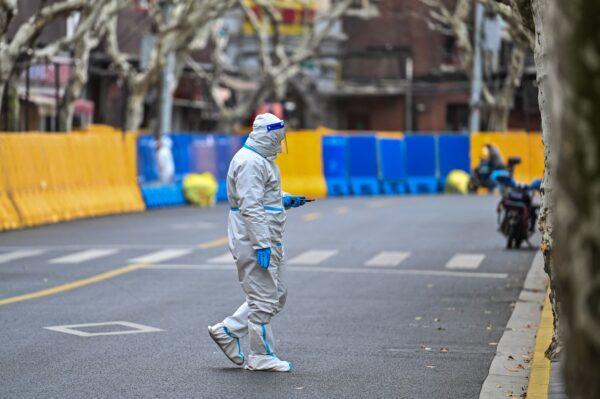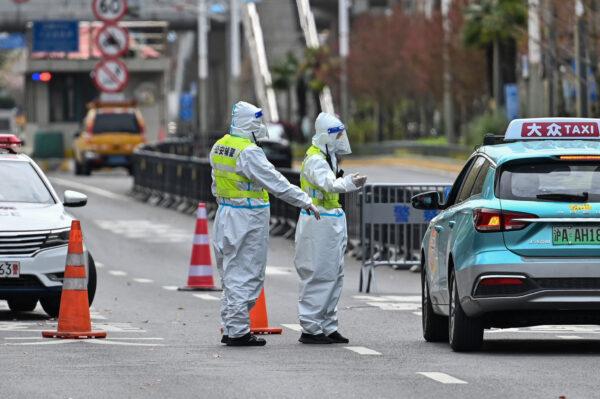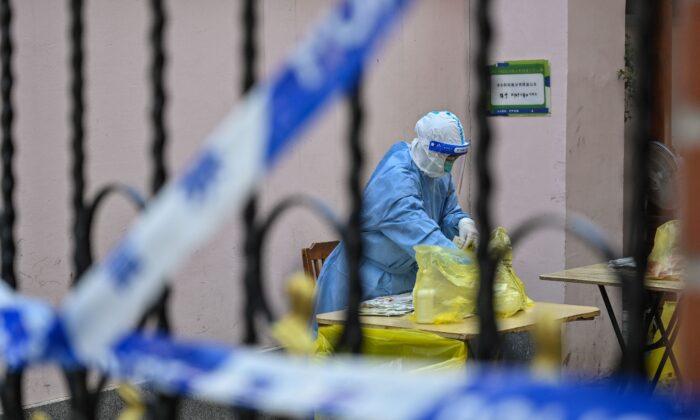Omicron is tearing through densely-populated Shanghai, but some residents are finding the regime’s strict COVID control measures and lack of transparency worse than the threat posed by the highly-contagious variant itself.
His grandmother lives at the Donghai Elderly Care Hospital, a large elderly-care facility that has been sealed off since early February. The hospital is reportedly battling a COVID-19 outbreak that is more severe than what’s officially disclosed.
On March 28, he was told that his grandmother tested positive. Cheng said he had lost contact with her since then.
“I couldn’t believe we completely lost contact with grandma after receiving the notice on [March] 28,” Cheng told The Epoch Times.
“A front office staff said that a nurse had helped my grandmother charge her phone, and that told her to call me back.”
By Wednesday, “there was no reply. Her phone still couldn’t get through,” said Cheng.
When asked about his grandmother’s condition, neither the staff nor doctors couldn’t answer, saying the facility was taken over by a special medical team.
The financial hub announced a snap lockdown on March 27, sealing off the city’s 26 million residents in two phases. Even before then, parts of the city had already been in localized lockdowns.
Under the regime’s “zero-COVID” approach, infected individuals and their close contacts would be hospitalized and isolated respectively in specialized facilities. This policy has led to the city’s hospitals and centralized quarantine centers being overloaded. Shanghai has converted apartment buildings, an exhibition center, and other facilities to host potentially-infected patients while testing more residents.
Sealed in his room, Cheng could only ask around and turned to social media to find more information about his grandmother. He has grown more worried as he saw photos and descriptions of the outbreak in the hospital.
“The notice, some families received after a long wait, was to sign for [collecting] an ashes box,” said Cheng. “It’s terrible.”
“You have to give me an answer: is she alive?” Cheng said.

Many posts on the microblogging platform Weibo alleged dozens of patients, doctors, and other workers at the aged-care facility had tested positive for COVID-19.
Some Weibo users who claimed they are relatives of patients at the facility alleged that many elderly had died.
Shanghai authorities haven’t yet reported any death from COVID-19 in the latest outbreak, which started on March 1. Donghai Elderly Care Hospital hasn’t released any notice regarding the COVID outbreak or related death.
Six orderlies at the Donghai Elderly Care Hospital told the Journal that they had witnessed or heard of several bodies being removed from the facility in recent days, and that at least 100 patients had tested positive.
One said that he had to dress a male patient who died on the night of March 28 after he was infected with COVID-19. Another recalled the sight of six hearses parked at the hospital gate at night, said the report.
It’s not clear whether the deaths are directly linked to the COVID-19 outbreak in the hospital, according to the report.
The Epoch Times couldn’t reach Donghai Elderly Care Hospital through repeated calls.
Cheng told The Epoch Times that he had heard some families were also unable to reach their loved ones at the hospital.
Shanghai authorities have banned all visitors to elderly-care families since March 10.
Gao Yong (pseudonym) couldn’t reach his relative living in the same elderly caring home. Gao had learnt that his relative tested positive and was sent to Shanghai Zhoupu Hospital.
“He doesn’t have a phone, so I couldn’t ring him,” he told The Epoch Times.
“All I could do was wish my elder could get through this.”

As Shanghai entered its fifth day of lockdown, more residents, especially the older ones, are experiencing difficulty coping with the harsh restrictions.
But there is little sign that the Chinese regime is set to relax it’s heavy-handed approaches to the pandemic.




